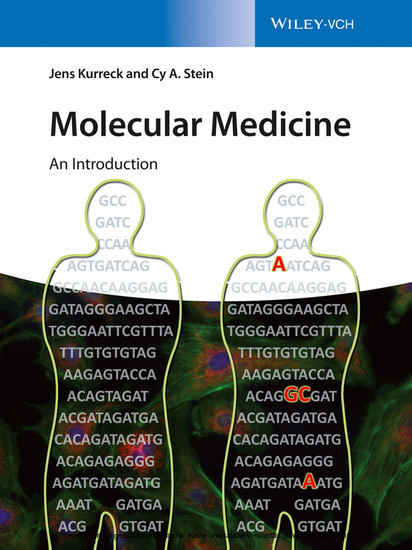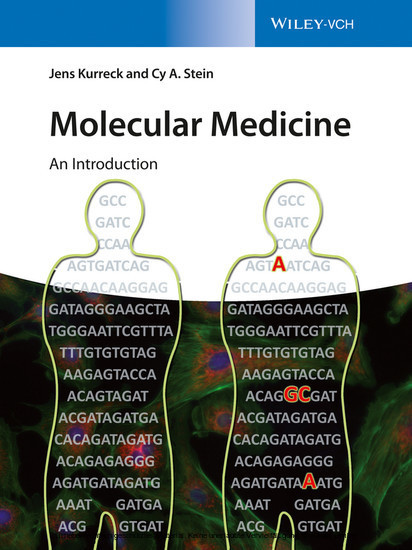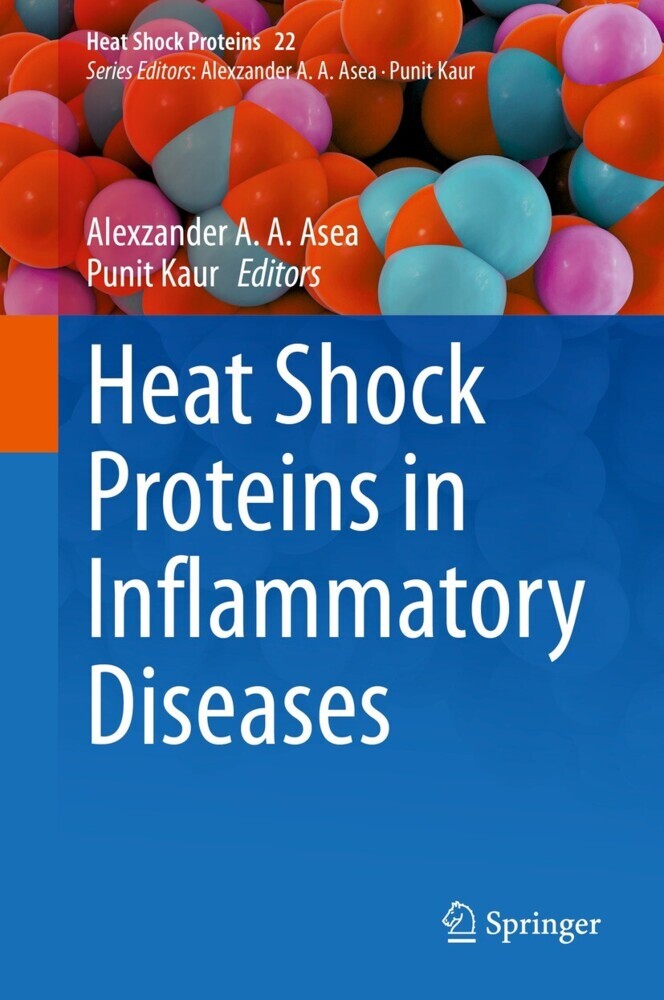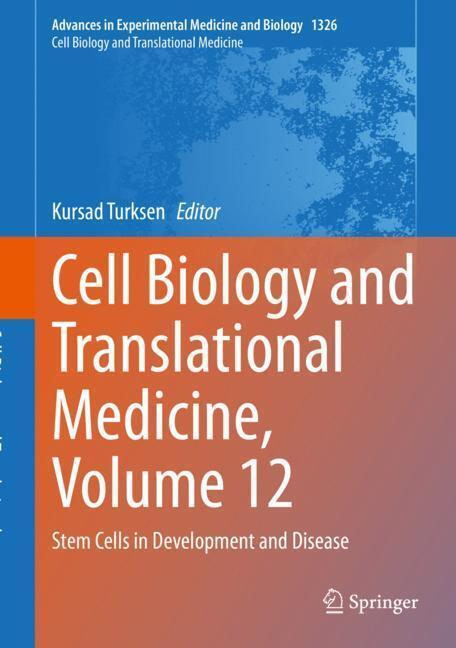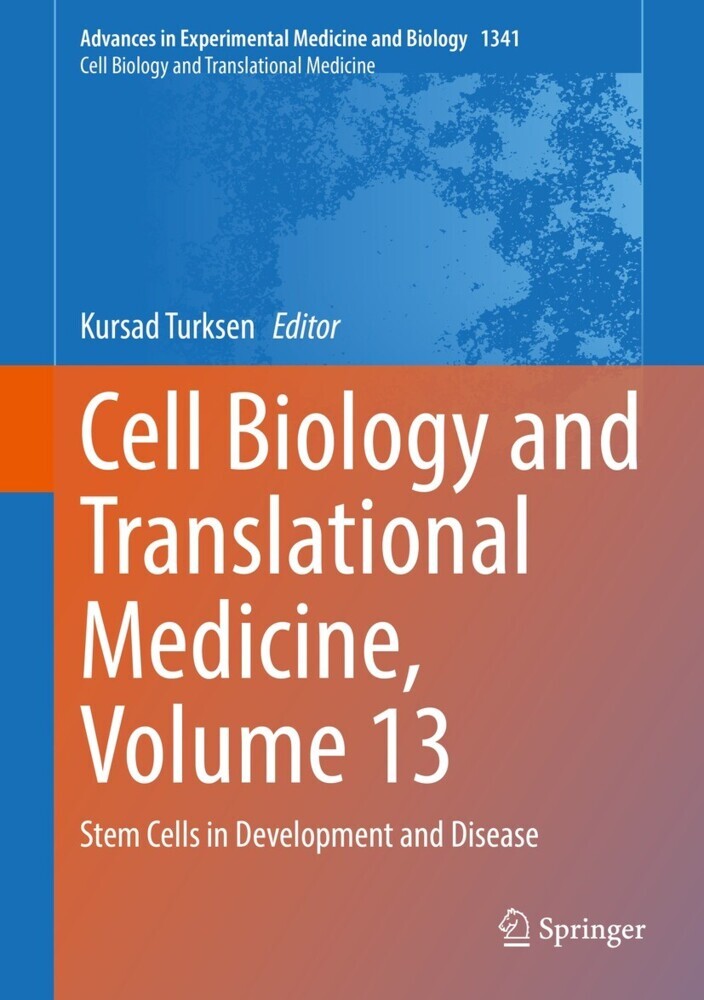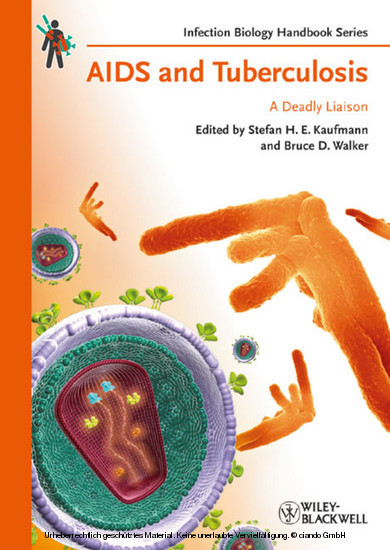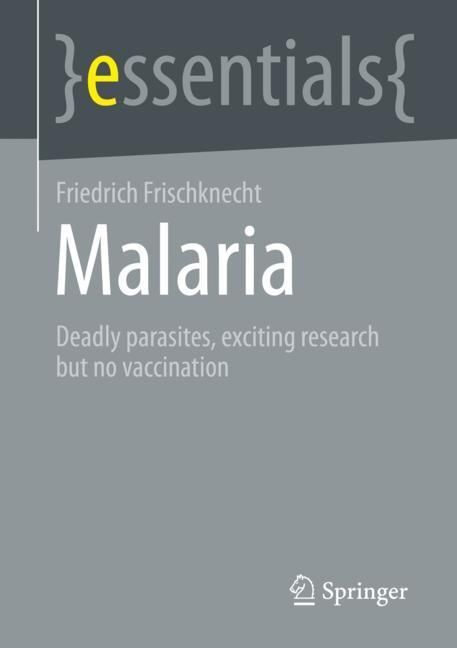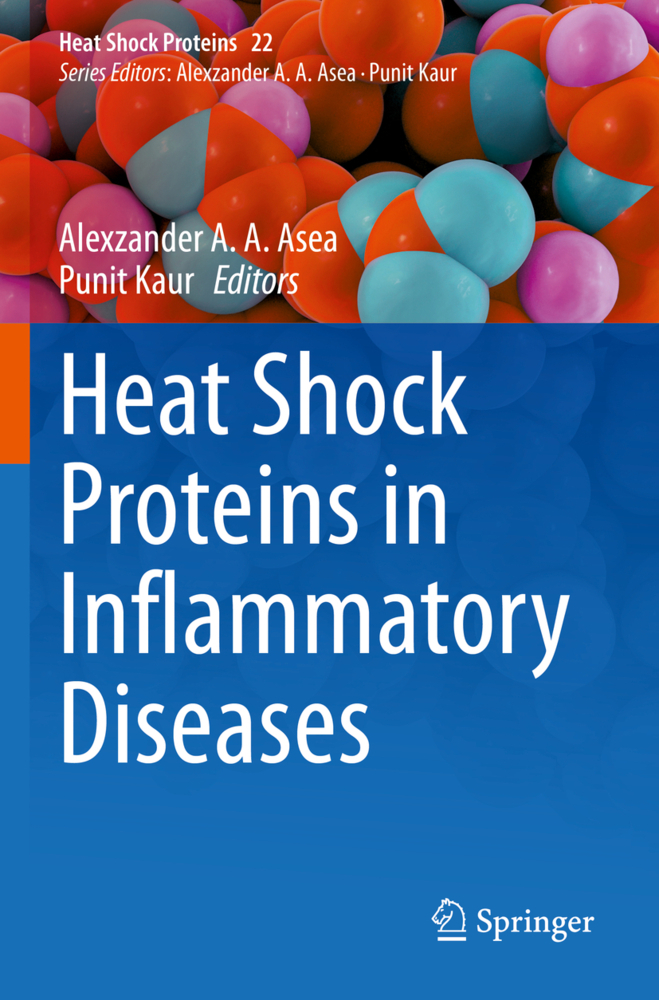Molecular Medicine
An Introduction
Easy to read, yet comprehensive, this is the perfect introduction into the molecular basis of disease and the novel treatment options that have become available. The authors, Jens Kurreck and Cy Stein, have both long-standing teaching experience on the subject, one from a biologist's angle, the other with a medical background. Together, they have produced a modern textbook for courses in Molecular Medicine that incorporates modules from immunology to signaling, from virology to gene therapy, and the latest development in personalized medicine.
Jens Kurreck is full Professor for Applied Biochemistry at the Berlin University of Technology (TUB), Germany. He studied biochemistry and philosophy at the Free University of Berlin (FUB) and completed his PhD at the TUB in 1998. A postdoc at Arizona State University in Tempe, AZ, USA, was followed by an assistant professorship at the FUB. From 2007 to 2009 he was Professor of Nucleic Acid Technologies at the University of Stuttgart before attaining his current position in Berlin. In 2012 he was visiting professor at the Dongseo University in Busan, Korea. His research focuses on RNA technologies, pain research and virology. He has published more than 70 papers in peer-reviewed journals and edited the book 'Therapeutic Oligonucleotides'. In 2005 he received the Young Scientist Lectureship Award of the European Society for Neurochemistry and a prize for his excellent teaching.
Cy A. Stein is Professor of Oncology and Experimental Therapeutics at the City of Hope Medical Center in Duarte, CA, USA. He received a Ph.D. in chemistry from Stanford University and the M.D. degree at the Albert Einstein College of Medicine, NY, in 1982. After appointments as clinical associate and assistant professor at Columbia University, he became Professor of Medicine and Molecular Pharmacology at the Albert Einstein College of Medicine in New York (2003-2012). At the same time, he was Attending Physician and Director of Medical Genitourinary Oncology at the Montefiore Medical Center. He has published more than 200 scientific papers and received numerous awards, among them the Clinical Career Development Award of the American Cancer Society in addition to a Faculty of 1000 Biologists Selection.
Jens Kurreck is full Professor for Applied Biochemistry at the Berlin University of Technology (TUB), Germany. He studied biochemistry and philosophy at the Free University of Berlin (FUB) and completed his PhD at the TUB in 1998. A postdoc at Arizona State University in Tempe, AZ, USA, was followed by an assistant professorship at the FUB. From 2007 to 2009 he was Professor of Nucleic Acid Technologies at the University of Stuttgart before attaining his current position in Berlin. In 2012 he was visiting professor at the Dongseo University in Busan, Korea. His research focuses on RNA technologies, pain research and virology. He has published more than 70 papers in peer-reviewed journals and edited the book 'Therapeutic Oligonucleotides'. In 2005 he received the Young Scientist Lectureship Award of the European Society for Neurochemistry and a prize for his excellent teaching.
Cy A. Stein is Professor of Oncology and Experimental Therapeutics at the City of Hope Medical Center in Duarte, CA, USA. He received a Ph.D. in chemistry from Stanford University and the M.D. degree at the Albert Einstein College of Medicine, NY, in 1982. After appointments as clinical associate and assistant professor at Columbia University, he became Professor of Medicine and Molecular Pharmacology at the Albert Einstein College of Medicine in New York (2003-2012). At the same time, he was Attending Physician and Director of Medical Genitourinary Oncology at the Montefiore Medical Center. He has published more than 200 scientific papers and received numerous awards, among them the Clinical Career Development Award of the American Cancer Society in addition to a Faculty of 1000 Biologists Selection.
1;Molecular Medicine: An Introduction;1 1.1;Contents;9 1.2;Preface;15 1.3;1: Introduction;17 1.3.1;1.1 The Basics of Molecular Medicine;18 1.3.1.1;1.1.1 Topics of Molecular Medicine;18 1.3.1.2;1.1.2 Stages of Drug Development;19 1.3.2;1.2 The Human Cell;20 1.3.2.1;1.2.1 Organelles;20 1.3.2.1.1;1.2.1.1 The Nucleus;20 1.3.2.1.2;1.2.1.2 Mitochondria;22 1.3.2.1.3;1.2.1.3 Endoplasmic Reticulum and Golgi Apparatus;23 1.3.2.1.4;1.2.1.4 Peroxisome and Lysosome;24 1.3.2.2;1.2.2 Cell Cycle;24 1.3.2.3;1.2.3 Apoptosis;25 1.3.3;1.3 DNA Replication and Gene Expression;26 1.3.3.1;1.3.1 DNA Replication;27 1.3.3.2;1.3.2 Mutations;29 1.3.3.3;1.3.3 Transcription;30 1.3.3.4;1.3.4 Epigenetic Regulation of Gene Expression;35 1.3.3.5;1.3.5 Translation;37 1.3.3.6;1.3.6 Protein Degradation;40 1.3.4;1.4 Biological Communication;41 1.3.4.1;1.4.1 Neurotransmitters;42 1.3.4.2;1.4.2 Hormones;43 1.3.4.3;1.4.3 Signal Transduction;44 1.3.5;1.5 The Immune System;46 1.3.5.1;1.5.1 The Innate Immune System;46 1.3.5.1.1;1.5.1.1 The Complement System;47 1.3.5.2;1.5.2 The Adaptive Immune System;49 1.3.5.2.1;1.5.2.1 Cellular Immunity;49 1.3.5.2.2;1.5.2.2 Humoral Immunity;50 1.3.6;References;52 1.4;2: Methods in Molecular Medicine;53 1.4.1;2.1 DNA Microarrays;54 1.4.2;2.2 Quantitative Polymerase Chain Reaction;56 1.4.3;2.3 Next-Generation Sequencing;61 1.4.4;2.4 Animal Models in Biomedical Research;67 1.4.5;2.5 Additional Methods;72 1.4.5.1;2.5.1 Fluorescence Microscopy;72 1.4.5.2;2.5.2 Flow Cytometry and Fluorescence-Activated Cell Sorting;74 1.4.5.3;2.5.3 Surface Plasmon Resonance;75 1.4.6;References;75 1.5;3: Genetic Disorders;77 1.5.1;3.1 Single-Gene Disorders;78 1.5.1.1;3.1.1 Autosomal Dominant Disorders;80 1.5.1.1.1;3.1.1.1 Familial Hypercholesterolemia;81 1.5.1.1.2;3.1.1.2 Polycystic Kidney Disease;83 1.5.1.1.3;3.1.1.3 Marfan's Syndrome;83 1.5.1.1.4;3.1.1.4 Huntington's Disease;84 1.5.1.2;3.1.2 Autosomal Recessive Disorders;85 1.5.1.2.1;3.1.2.1 Cystic Fibrosis;86 1.5.1.2.2;3.1.2.2 Tay-Sachs Disease;87 1.5.1.2.3;3.1.2.3 Phenylketonuria;88 1.5.1.2.4;3.1.2.4 Xeroderma Pigmentosum;89 1.5.1.3;3.1.3 X-Linked Recessive Disorders;90 1.5.1.3.1;3.1.3.1 Red-Green Color Blindness;91 1.5.1.3.2;3.1.3.2 Duchenne and Becker Muscular Dystrophy;91 1.5.1.4;3.1.4 Mitochondriopathies;93 1.5.2;3.2 Polygenic Disorders;96 1.5.2.1;3.2.1 Asthma;96 1.5.2.2;3.2.2 Diabetes Mellitus;97 1.5.3;References;99 1.6;4: Molecular Oncology;101 1.6.1;4.1 Molecular Biology of Breast Cancer and Its Clinical Implications;104 1.6.1.1;4.1.1 Intrinsic Subtypes of Breast Cancer;104 1.6.1.1.1;4.1.1.1 Luminal;104 1.6.1.1.2;4.1.1.2 Subclassification of TNBC;105 1.6.1.2;4.1.2 Molecular Profiling of Breast Cancer;105 1.6.1.3;4.1.3 Signaling Pathways;105 1.6.1.3.1;4.1.3.1 The Role of the Estrogen Pathway in Breast Cancer;106 1.6.1.3.2;4.1.3.2 Endocrine Therapy Resistance;106 1.6.1.3.3;4.1.3.3 The mTOR/PI3K Pathway and Endocrine Resistance;106 1.6.1.3.4;4.1.3.4 The CDK 4/6 Pathway;106 1.6.1.3.5;4.1.3.5 HER2 Pathway and HER2 Targeted Therapy;107 1.6.1.4;4.1.4 Angiogenesis Pathway;108 1.6.1.4.1;4.1.4.1 PARP Inhibitors;108 1.6.1.5;4.1.5 Other Biological Therapies/Approaches;109 1.6.2;4.2 Lung Cancer;109 1.6.2.1;4.2.1 Genetic Alterations in Non-Small Cell Lung Cancer;109 1.6.2.1.1;4.2.1.1 Epidermal Growth Factor Receptor;109 1.6.2.1.2;4.2.1.2 Anaplastic Lymphoma Kinase;110 1.6.2.1.3;4.2.1.3 Kirsten Rat Sarcoma (KRAS);110 1.6.2.1.4;4.2.1.4 The Proto-Oncogene ROS1;111 1.6.2.1.5;4.2.1.5 The Proto-Oncogene BRAF;111 1.6.2.1.6;4.2.1.6 The Human Epidermal Growth Factor Receptor 2 (HER2);111 1.6.2.1.7;4.2.1.7 The RET Proto-Oncogene;111 1.6.2.1.8;4.2.1.8 The MET Proto-Oncogene;111 1.6.2.1.9;4.2.1.9 Phosphatidylinositol-3-Kinase (PI3K);111 1.6.2.1.10;4.2.1.10 Immune Checkpoint Inhibition;112 1.6.3;4.3 Hepatocellular Carcinoma;112 1.6.3.1;4.3.1 Risk Factors for Hepatocellular Carcinoma;112 1.6.3.2;4.3.2 Molecular Biology of Hepatocellular Carcinoma;113 1.6.3.3;4.3.3 Development of Sorafenib for the Treatment of Hepatocellular Ca
| ISBN | 9783527675081 |
|---|---|
| Artikelnummer | 9783527675081 |
| Medientyp | E-Book - PDF |
| Copyrightjahr | 2015 |
| Verlag | Wiley-Blackwell |
| Umfang | 404 Seiten |
| Sprache | Englisch |
| Kopierschutz | Adobe DRM |

